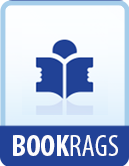[Side note: Inks]
In drawing for reproduction, the best ink is that which is blackest and least shiny. Until a few years ago it was the custom of penmen to grind their India ink themselves; but, besides the difficulty of always ensuring the proper consistency, it was a cumbersome method, and is now little resorted to, especially as numerous excellent prepared inks are ready to hand. The better known of these prepared inks are, “Higgins’ American” (general and waterproof), Bourgeois’ “Encre de Chine Liquide,” “Carter’s,” “Winsor & Newton’s,” and “Rowney’s.” Higgins’ and Carter’s have the extrinsic advantages of being put up in bottles which do not tip over on the slightest provocation, and of being furnished with stoppers which can be handled without smearing the fingers. Otherwise, they cannot be said to possess superiority over the others, certainly not over the “Encre de Chine Liquide.” Should the student have occasion to draw over salt-prints he will find it wise to use waterproof ink, as the bleaching acid which is used to fade the photographic image may otherwise cause the ink to run.
[Side note: Papers]
Bristol-board is probably the most popular of all surfaces for pen drawing. It is certainly that most approved by the process engraver, whose point of view in such a matter, though a purely mechanical one, is worthy of consideration. It has a perfectly smooth surface, somewhat difficult to erase from with rubber, and which had better be scratched with a knife when any considerable erasure is necessary. As the cheap boards are merely a padding veneered on either side with a thin coating of smooth paper, little scraping is required to develop a fuzzy surface upon which it is impossible to work. Only the best board, such as Reynolds’, therefore, should be used. Bristol-board can be procured in sheets of various thicknesses as well as in blocks.
Whatman’s “hot-pressed” paper affords another excellent surface and possesses some advantages over the Bristol-board. It comes in sheets of various sizes, which may be either tacked down on a board or else “stretched.” Tacking will be satisfactory enough if the drawing is small and is to be completed in a few hours; otherwise the paper is sure to “hump up,” especially if the weather be damp. The process of stretching is as follows: Fold up the edges of the sheet all around, forming a margin about an inch wide. After moistening the paper thoroughly with a damp sponge, cover the under side of this turned-up margin with photographic paste or strong mucilage. During this operation the sheet will have softened and “humped up,” and will admit of stretching. Now turn down the adhesive margin and press it firmly with the fingers, stretching the paper gently at the same time. As this essential part of the process must be performed quickly, an assistant is requisite when the sheet is large. Care should be taken that the paper is not strained too much, as it is then likely to burst when it again contracts.




